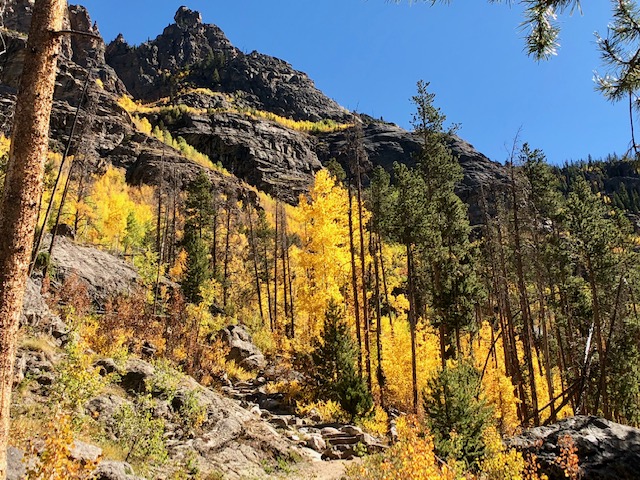Aspen Tree Facts
Last year the Aspens on the west side of the divide were in full color on September 15th when I took the picture above. I planned to hike the East inlet trail in Grand Lake and was surprised to find the Aspens had already changed color! Aspen leaves change color due to the decrease in photo synthesis as the days in the fall become shorter. The beautiful yellow and orange colors are already in the leaf and show up when the green summer color from chlorophyll fades.

Yellow Aspens on East Inlet Trail Grand Lake, Colorado.
Aspens are deciduous trees and have become the most widespread tree in North America. They are often the first trees to grow in burned areas. They also are able to grow all year long. Aspen trees are joined at the roots and a stand is considered one organism. The "Pando" aspen grove in Utah is the largest known organism on the entire planet. Some Aspens have even been estimated at being 80,000 years old!
Aspens have more uses than just their good looks. Aspen wood is often used in match sticks because it does not burn easily, chopsticks because it is flexible, and OSB construction boards.

Aspens also have medicinal uses. Salicin is a chemical that is similar to Aspirin. This can help to reduce swelling, treat joint pain, back pain, and help with nerve pain and joint problems.
The Ute indians had a legend about aspens and their quaking leaves. The Great Spirit visited the earth during a special moon. Nature trembled to pay homage except for the proud and beautiful aspen tree. The Great Spirit was furious and decreed from that time on Aspen leaves would tremble whenever someone looked at them.
Sources National Forests .org, wikipedia, Web MD

